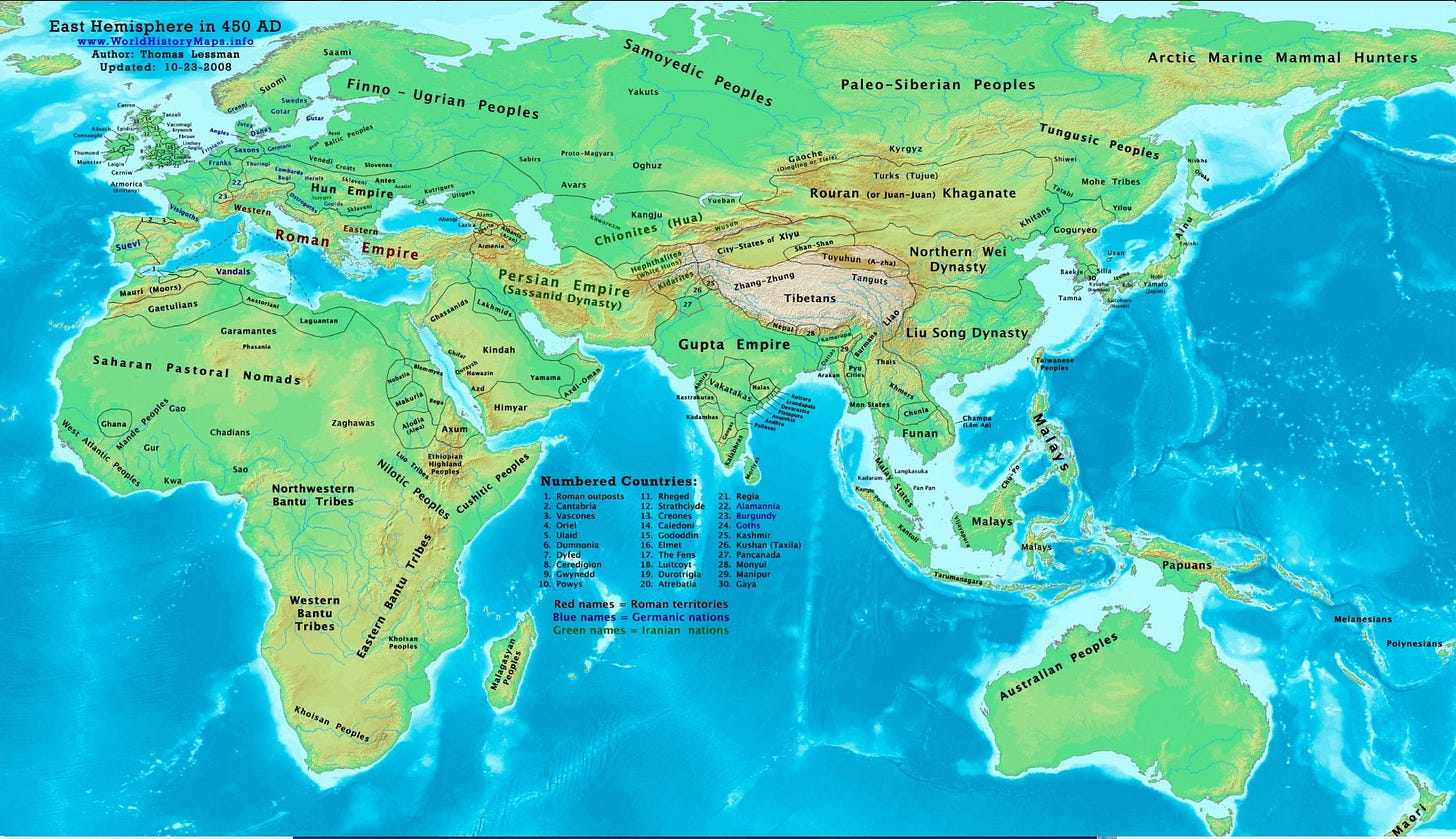China's Byzantine Era
A History of Mankind (304)
To read previous posts in the History of Mankind, which is pretty long, you can click here. Make sure to become a paying subscriber because most are pay-walled.
Following the collapse of the Han Dynasty in the early 3rd century, China fragmented into various states but retained a centripetal tendency to reconstitute – a testament to the legacy of centuries of unified empire, as well as the geographic conditions of the region.
The Jin Dynasty then managed to rebuild the empire for about four decades, before barbarian invasions of a scale and intensity probably bigger than those suffered by the Roman Empire sent the imperial court southwards, and turned it into the more stable, although not the most powerful, of the various political actors in China — that country’s version of the contemporary Eastern Roman Empire.
Fu Jian’s failed attempt at taking down the Jin in 383, however ambitious or timid may have been, represented an expression of the idea of China as an imperial realm, one which natural state was unification: even if the realm temporarily became dis-unified as a consequence of negative, often external forces that had to be corrected through the recourse of proper adherence of ancient Chinese notions, as transmitted, traduced and adapted by what came to be identified as Confucian thought.
That this was expressed by a barbarian who still felt attached to this unifying drive goes to show how strong the idea was; just like, in the same manner, on the other side of the world, the barbarian Charlemagne in the 9th century embodied and embraced the memory of an idea just as strong, that of Europe’s Roman past.
In fact, this idea of China as a pre-existing entity that, if found fragmented, had to be put back together, became the most dominant thread in Chinese thought and history. It’s a belief that is grounded on geographic realities, including frequent natural catastrophes that sometimes come one after the other as under Emperor Cheng in the 1st century BC, necessitating the use of resources from unaffected regions to help those affected; as well as the convenience provided by single control of two large, complex riverine systems – the Yellow and Yangtze River basins – depending on hydraulic works, as well as the mountains, deserts and forests that protect the approaches to such systems.
Keep reading with a 7-day free trial
Subscribe to A History of Mankind to keep reading this post and get 7 days of free access to the full post archives.


